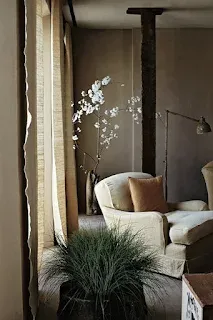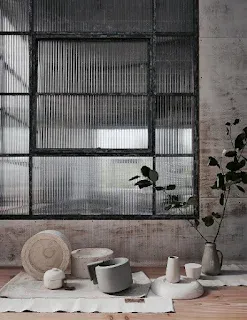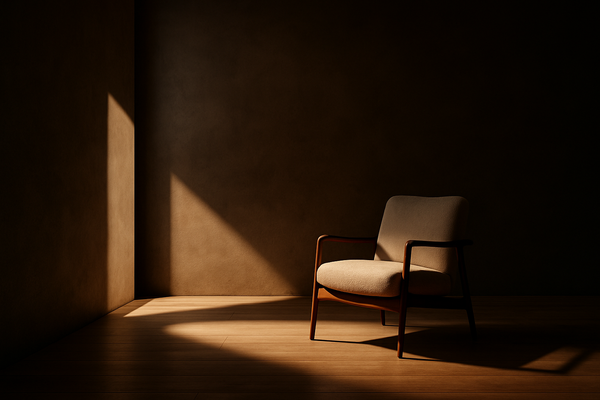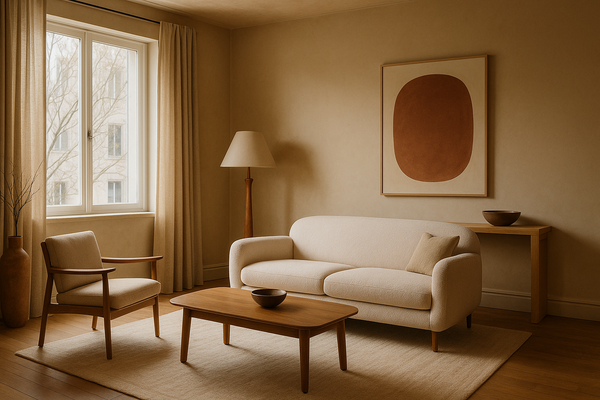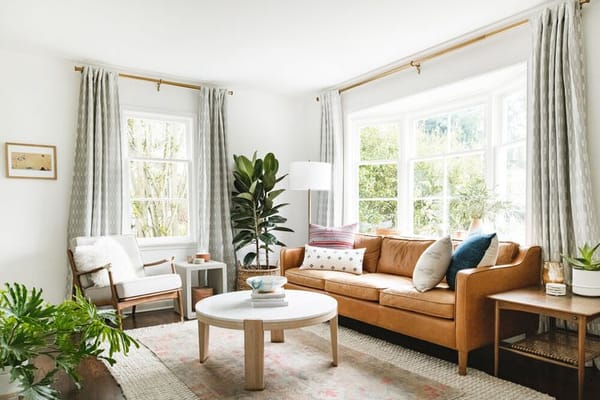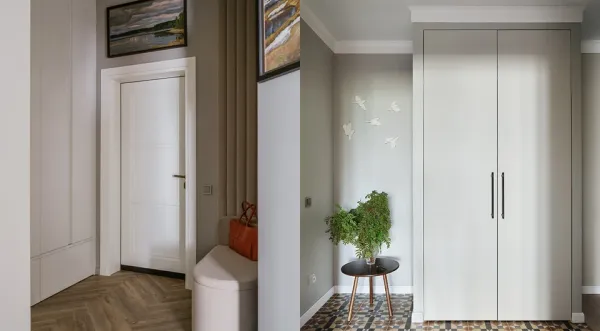Wabi Sabi. Do you know what it is?
Elements of one of the newest and most mysterious style trends, Wabi Sabi
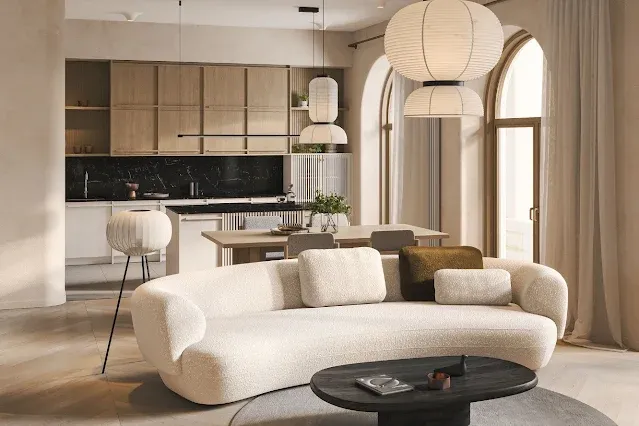
Elements of one of the newest and most mysterious style trends, Wabi Sabi, have increasingly begun to appear in the interiors of famous architects and designers. The concept of a style with Japanese roots is more like a philosophical trend than an interior solution, since in addition to the visual component, it conveys a person’s attitude to life and their perception of the world.
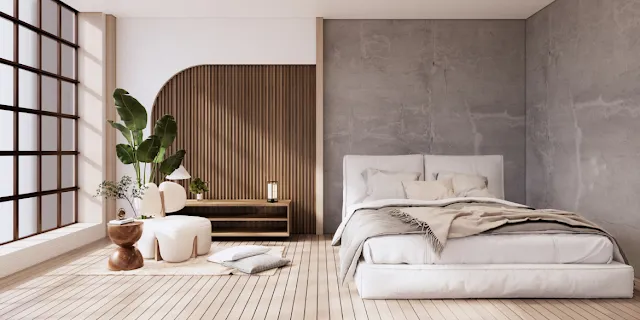
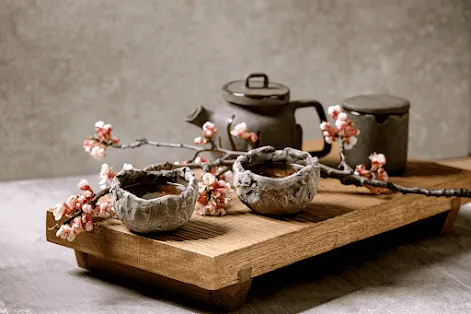
The meaning of the word Wabi in translation from Japanese is described as naturalness, simplicity, and asymmetry, while Sabi speaks of the continuous flow of time, some archaism, and genuineness that determines the meaning of things. When these two hieroglyphs are combined, the concept of the Japanese worldview is revealed - the perception and acceptance of life with all its imperfections, in complete harmony with oneself and nature.
Beth Kempton, author of Wabi Sabi: The Japanese Secret to True Happiness in an Imperfect World, notes:
"Wabi-sabi allows you to be yourself, but not go crazy with the desire for an incomprehensible goal of perfection. Gently pushes you to where you relax and enjoy life. The author says that beauty is found in the most incredible places, giving you the opportunity to please yourself and others every day."
So, the formula of Wabi Sabi style:
Harmony = nature + imperfections
This formula defines the 4 basic principles of style.
1. Letting go of perfectionism
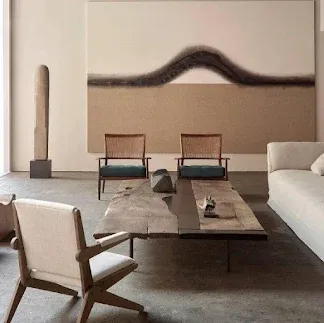
According to the philosophy of Wabi Sabi, there is no perfection in the world; everything is harmonious in essence, and the features are beautiful and valuable. Following this principle, in interior design, designers use rough, unprocessed surfaces, curved lines, and rustic materials.
And, of course, unlike classical styles, Wabi Sabi does not accept symmetry. In a natural landscape, it is impossible to find trees or bushes growing at the same distance from each other; they are collected in harmonious groups. Also, in the arrangement of decorative elements or furniture, one should be guided by the natural laws of composition.
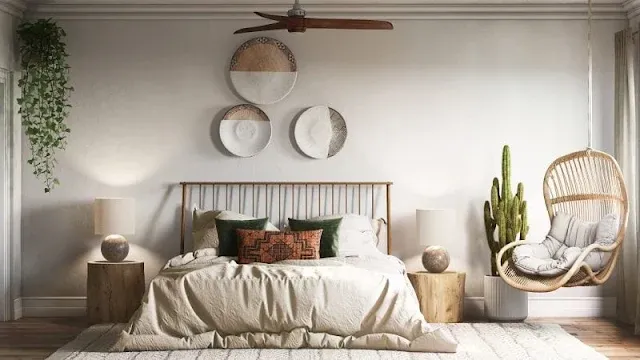
As you can see, the Wabi Sabi style is based on the ideas of minimalism. To prevent the room from turning into a "grouped dump of imperfect" things, reduce the amount of furniture, decor, and household utensils. To do this, use built-in storage systems, preferably with hidden handles, where everything necessary for life is located. Also, avoid open shelves and racks, and unnecessary things should be removed from the house; that's why they are unnecessary.
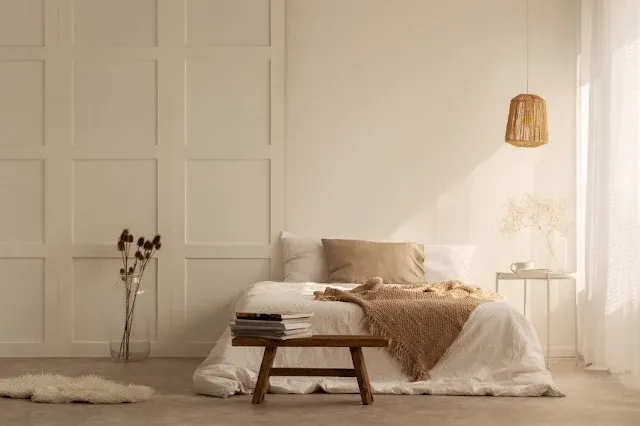
2. Natural motives
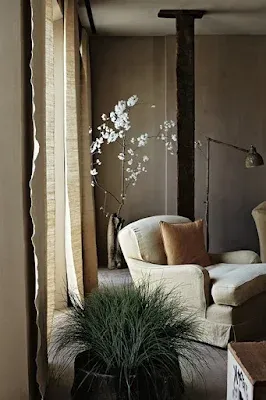
The aesthetics of the Japanese philosophy Wabi Sabi certainly include motifs of nature. In the interior, this can be emphasized by using wood, stone, clay, and rough textiles. These materials create a harmonious space in which a person feels calm and comfortable.
In some interiors, elements of stone or wood look completely raw and rustic. It seems as if the designer simply transferred what nature itself created into the living space without making any changes or improvements. Wabi in this case appears in its true form.
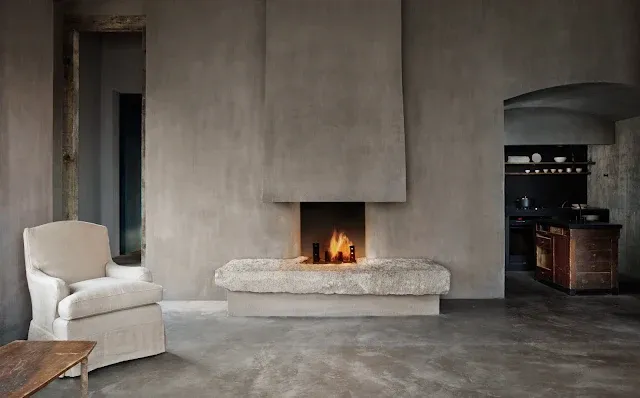
Agree, there is nothing new in using natural materials in the interior: Scandinavian style, classic style, Mediterranean style and other trends suggest the presence of furniture or decor elements made of wood or stone. But in Wabi Sabi, these materials carry a deeper meaning, which is reflected in the following principle.
3. Authenticity
In accordance with the principles of Wabi Sabi, items with a history, personal or family, are of particular value, calling for a reminder of the fleeting spirit of time.

For example, children's drawings, home bedspreads, designer handmade decor or even snags brought from a walk in the forest. Such things are recommended to be used in the design of the space, thanks to which the interior acquires animation and uniqueness.
It is clear that, unlike the hypertrophied and standard "coziness" of the Hygge style elements, in the Wabi Sabi interior, the decor is more personalized. At the same time, important things are located in visible central places, and typical, utilitarian elements (sockets, household appliances) are hidden behind decorative panels or furniture facades.
If it is impossible to do without such techno-elements in visible areas (for example, household appliances), they should have a laconic form and be present in minimal quantities.

The result is a unique interior that is simply impossible to copy.
4. Wabi Sabi Color Palette
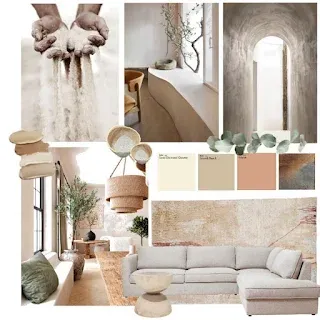
Wabi Sabi style is characterized by the use of a neutral color palette , borrowed from nature itself - shades of brown, beige, cream or green. And, of course, you should not ignore the combination of white and gray colors.
On the contrary, bright, saturated decors and shiny finishes clash with the calm space of Wabi Sabi.
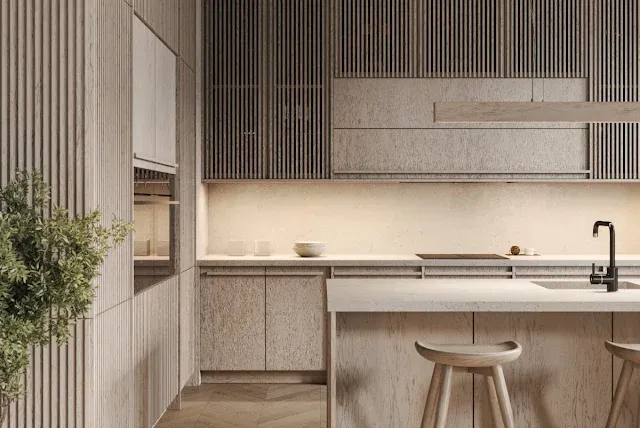
The muted color scheme sets a calm, philosophical mood. In such an interior, there is no desire to quarrel or sort things out.
Adaptation to modern space
If absolutely all interior elements are made in the Wabi Sabi style, there will be obvious style oversaturation. As an example, consider the complex work of the famous designer Axel Vervoordt in the Gravenwezel castle.
The interior conceptually fits into the premises – a Belgian castle, representing a synthesis of the philosophy of the West and the East.
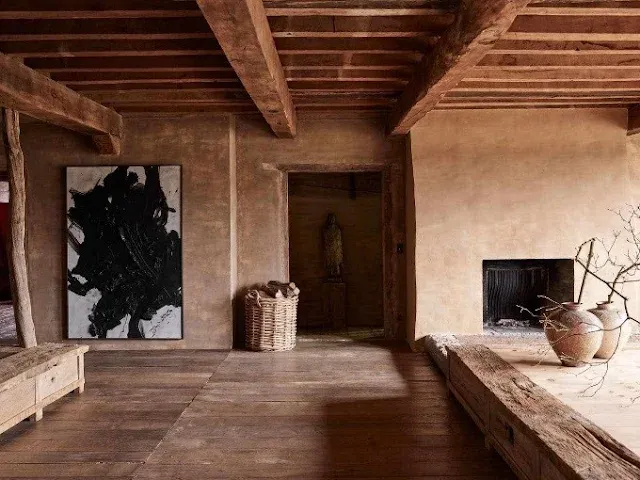
Rough, untreated surfaces, natural materials , imperfect lines, neutral colors – the designer uses all the components of the style, but the rooms look uncomfortable, and the furniture details are primitive. It is difficult to imagine such a concept in a city apartment, with its requirements for functionality and technology.
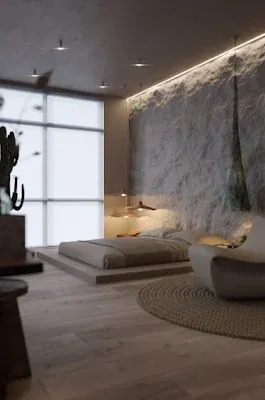
Therefore, in modern apartments or country houses, “adapted” interiors look organic, made with a combination of several styles. For example, Wabi Sabi and minimalism. A textured stone wall, low furniture, small rugs reminiscent of tatami, and a modern ceiling with minimalist lamps are a logical solution for a bedroom.
The snow-white kitchen and dining area made from natural materials is another example of the perfect combination of minimalism and Wabi Sabi.
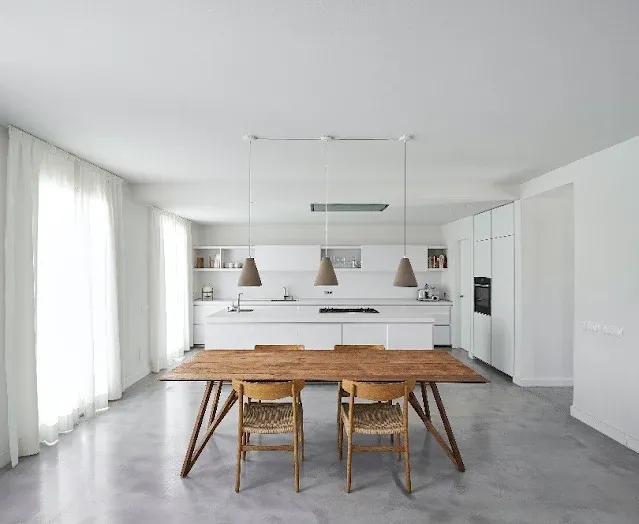
An important element of the kitchen interior is the dining area. This is not a bar counter, not an island, but a large table with comfortable chairs. At the same time, the tabletop can be quite rough, made of rustic wood, and the chairs are made of natural rattan.
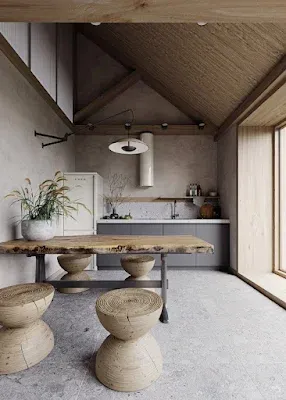
In the combination of the already familiar Scandinavian style and the new Wabi Sabi, a breath of fresh air is felt – the harmony of the Japandi style. An example is a small kitchen made of Fenix plastic in a smoky color.
Kitchen in Wabi Sabi style
Although the Wabi Sabi concept is more suitable for relaxation or sleep spaces such as the living room and bedroom, the kitchen space can incorporate elements of this oriental style.
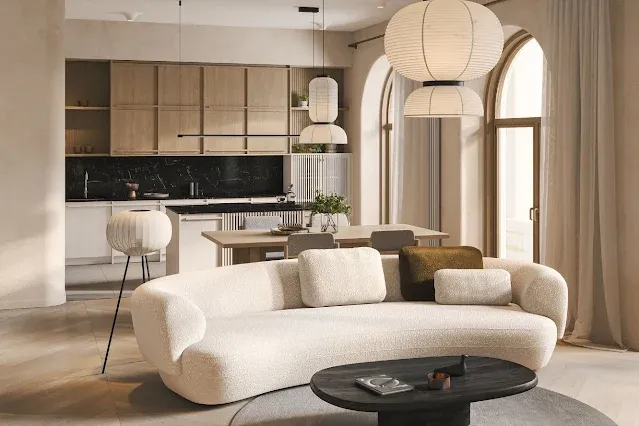
A kitchen in the Wabi Sabi style should be functional and laconic at the same time, as shown in the photo. To achieve this, it is advisable to hide all accessories in cabinets with hidden handles, and place a minimum of decor on visible surfaces.
The ideal solution is to use a sliding door system reminiscent of Japanese screens. And the lines of the display cases, resembling bamboo trunks, enhance the Japanese note of the interior.
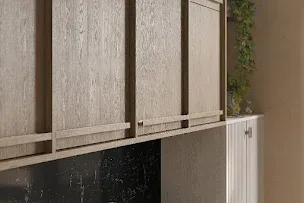
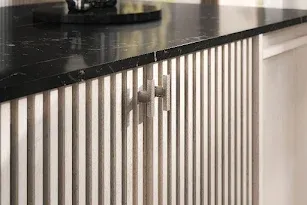
Natural solid wood kitchen and dining area facades, stone countertops, linen curtains, discreet oak parquet finish, bamboo paper in Japanese lamps, furniture in the living room area reminiscent of sea pebbles – all elements support the idea of a harmonious interior in the Wabi Sabi style. Eastern philosophy gently transforms modern space, and with it, our attitude to life.
Note!
The Wabi Sabi interior style does not offer anything new, does not impose super-complex forms, designs or materials, does not require regular updating and improvement, but rather fits perfectly into the modern concept of conscious consumption and a careful attitude to life.
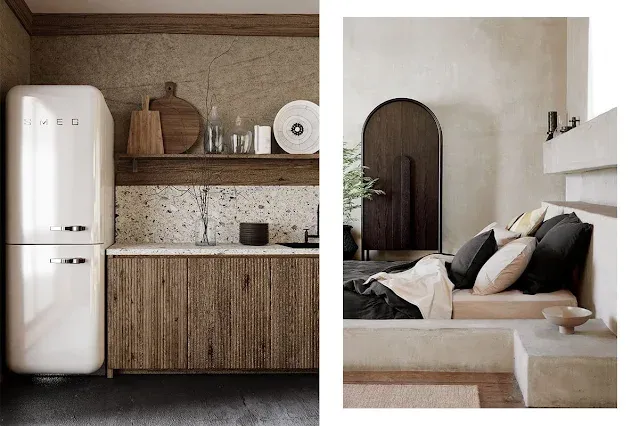
The concept of this attitude to life is reflected in the elements of the Wabi Sabi interior style.
